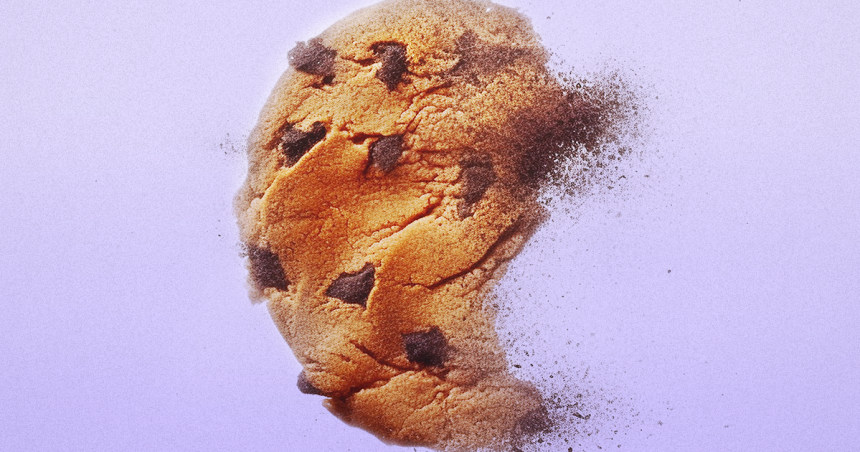Get marketing news you’ll actually want to read
Marketing Brew informs marketing pros of the latest on brand strategy, social media, and ad tech via our weekday newsletter, virtual events, marketing conferences, and digital guides.
They did it, they really did it. Google really got rid of cookies. Sort of.
On January 4, Google’s Chrome browser began turning off third-party cookies for 1% of its users—or about 30 million users, according to Insider Intelligence—giving advertisers and publishers a glimpse at what Chrome, the most popular browser in the world, might look like after cookies.
The results might shock you. Just kidding. We now have a bit of a snapshot of some early data on the effects of this change from the first week without cookies, courtesy of Paul Bannister, the chief strategy officer for the publishing ad-tech company Raptive, which handles the advertising sales for a collective of publishers including Feel Good Foodie, Epic Gardening, and MacRumors.
“Uncookied Chrome users appear to be monetizing about 30% worse than those [users] with cookies,” Bannister wrote in a LinkedIn post sharing the early results. Is that a cause for alarm? That percentage “feels like a number that’s a solvable problem from the perspective of making money for publishers,” he told Marketing Brew. It’s at least better than he thought it might be: He told us that, if we asked him before January 4, he “would’ve guessed more like 50%.”
Users without cookies tend to be worth less because advertisers know less about them, Bannister explained. With less targeting available, there are fewer bids, and that can bring prices down.
According to Bannister, in a worst-case scenario, a 30% depreciation could translate to a 30% drop in revenue. Today, users of Apple’s Safari browser monetize about 60% worse than cookied Chrome users, he wrote. Safari’s been without cookies since 2020, and Apple has yet to introduce a post-cookie solution, like Google’s Privacy Sandbox. Bannister and Raptive will be able to see how cookieless Chrome users monetize using Privacy Sandbox in the next couple of weeks.
“It’s going to take the whole year to really figure out what’s going on, and understand where the gaps are, and build all the pieces,” Bannister said. “We want to get that 30% as close to zero as possible.”
Zoom out: With the cookie apocalypse now (finally) on the horizon, the industry still might not be ready. IAB Tech Lab CEO Anthony Katsur told the Wall Street Journal that Google’s plan to kill the cookie for good in Q4, aka the “greatest revenue-generating part of the year” for advertisers is “just a terrible decision.” 😬
Read the full article here










